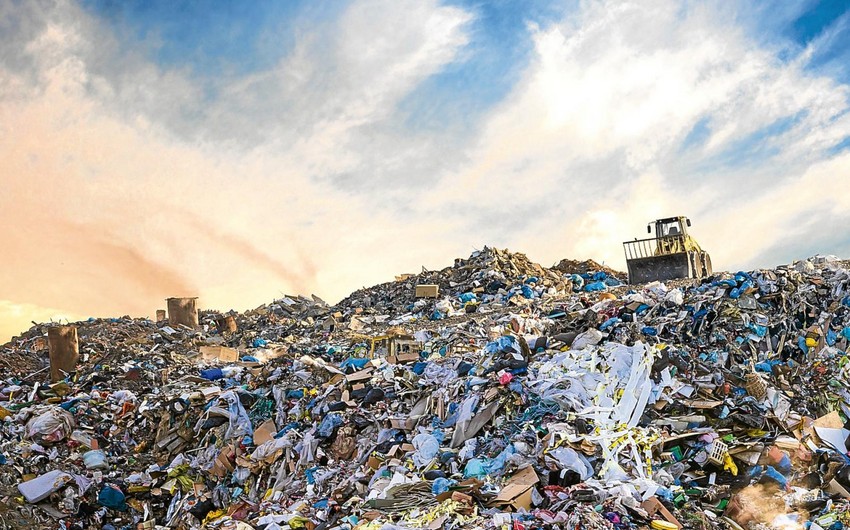Fewer than 60 multinationals are responsible for more than half of the world’s plastic pollution, with five responsible for a quarter of that, based on the findings of a piece of research published on April 24, Report informs.
The researchers concluded that for every percentage increase in plastic produced, there was an equivalent increase in plastic pollution in the environment.
“Production really is pollution,” says one of the study’s authors, Lisa Erdle, director of science at the non-profit The 5 Gyres Institute.
An international team of volunteers collected and surveyed more than 1,870,000 items of plastic waste across 84 countries over five years: the bulk of the rubbish collected was single-use packaging for food, beverage, and tobacco products.
Less than half of that plastic litter had discernible branding that could be traced back to the company that produced the packaging; the rest could not be accounted for or taken responsibility for.
“This shows very, very, very well the need for transparency and traceability,” says a study author, Patricia Villarrubia-Gómez, a plastic pollution researcher at the Stockholm Resilience Centre. “[We need] to know who is producing what, so they can take responsibility, right?”
The branded half of the plastic was the responsibility of just 56 fast-moving consumer goods multinational companies, and a quarter of that was from just five companies.
Altria and Philip Morris International made up 2% of the branded plastic litter found, Danone and Nestlé produced 3% of it, PepsiCo was responsible for 5% of the discarded packaging, and 11% of branded plastic waste could be traced to the Coca-Cola company.
“The industry likes to put the responsibility on the individual,” says the study’s author, Marcus Eriksen, a plastic pollution expert from The 5 Gyres Institute.
“But we’d like to point out that it’s the brands, it’s their choice for the kinds of packaging [they use] and for embracing this throwaway model of delivering their goods. That’s what’s causing the greatest abundance of trash.”
The Guardian approached Philip Morris International, Danone, Nestlé, PepsiCo and The Coca-Cola Company.
The Coca-Cola Company said: “We care about the impact of every drink we sell and are committed to growing our business in the right way.” It has pledged to make 100% of its packaging recyclable globally by 2025, and to use at least 50% recycled material in packaging by 2030.
Nestlé said it has reduced its virgin plastic usage by 14.9% in the last five years, and supports schemes around the world to develop waste collection and recycling schemes.
“Since launching our voluntary commitments to address plastic waste five years ago, we have significantly outperformed the market at large in reducing virgin plastic and increasing recyclability, according to the most recent report from the Ellen MacArthur Foundation,” it said.
The company also supports the creation of a global legally binding regulation on plastic pollution which is being negotiated this week.
However, while many of these companies have taken voluntary measures to improve their impact on plastic pollution, the experts behind the study argue they are not working. Plastic production has doubled since the beginning of 2000 and studies show only 9% of plastic is being recycled.
When the team collected data on self-reported yearly plastic packaging production for each of these multinational companies and compared it with the data from their 1,500-plus litter surveys, their statistical analysis showed that every 1% increase in plastic production was directly correlated with approximately a 1% increase in plastic pollution.
“Actually seeing this one-to-one increase, I was like, wow,” says a study author, Kathy Willis, a marine socio-ecologist from the Commonwealth Scientific and Industrial Research Organisation in Australia.
“Time and time again from our science we see that we really need to be capping how much plastic we are producing.”
However, Kartik Chandran, an environmental engineer at Columbia University, who was not involved in the research, said that while this new data was striking, the observation that 1% plastic production was equal to 1% plastic pollution was “a bit unrealistic” and “simplistic”.
He said the data did not consider plastic pollution in China, Korea and Japan, nor take into consideration recycling or clean-up initiatives under way.
A better analysis could be based on the net plastic flows into plastic production – also accounting for credits from the reuse of plastic materials – and the net plastic load ascribed as plastic pollution.
The team behind the study, some of whom are participating in the talks being held in Ottawa this week to discuss a UN Treaty for Plastic Pollution, said their findings emphasised the urgent need for a globally binding treaty focusing on production measures.
The talks will run to Monday, and Luis Vayas Valdivieso, the Ecuadorian ambassador to the UK, told the Guardian earlier this week he was hopeful that countries would come together to secure an international legally binding instrument on plastic pollution.
“It is very important we are negotiating this treaty now. The world is in a triple crisis of climate change, biodiversity loss and pollution. But while there are agreements in place for the first two, we have no legislation, no global agreement on plastic pollution.”


 https://static.report.az/photo/434f184b-aba6-33df-8f3e-05f8472bb2b0.jpg
https://static.report.az/photo/434f184b-aba6-33df-8f3e-05f8472bb2b0.jpg

